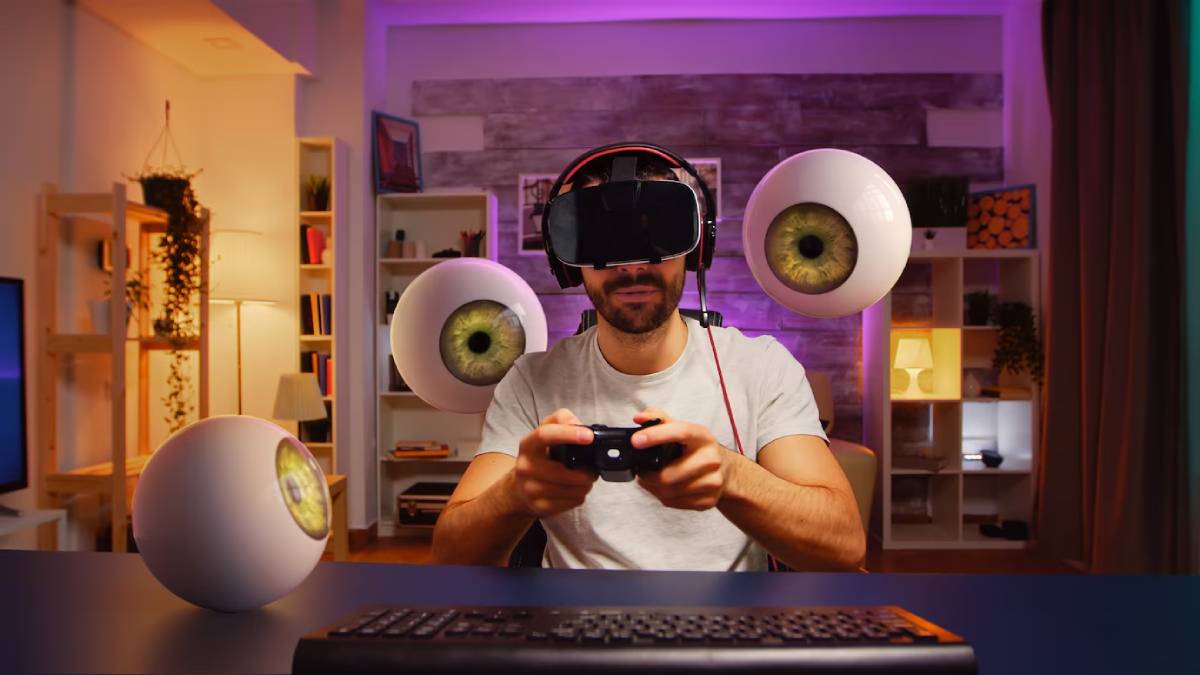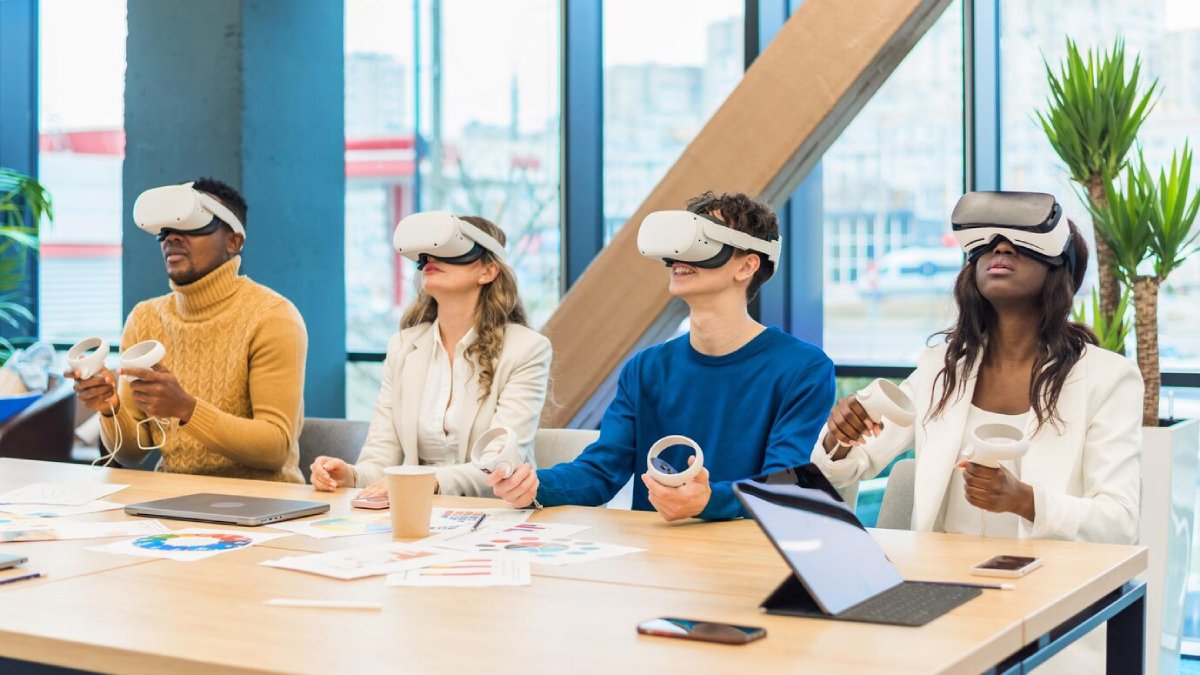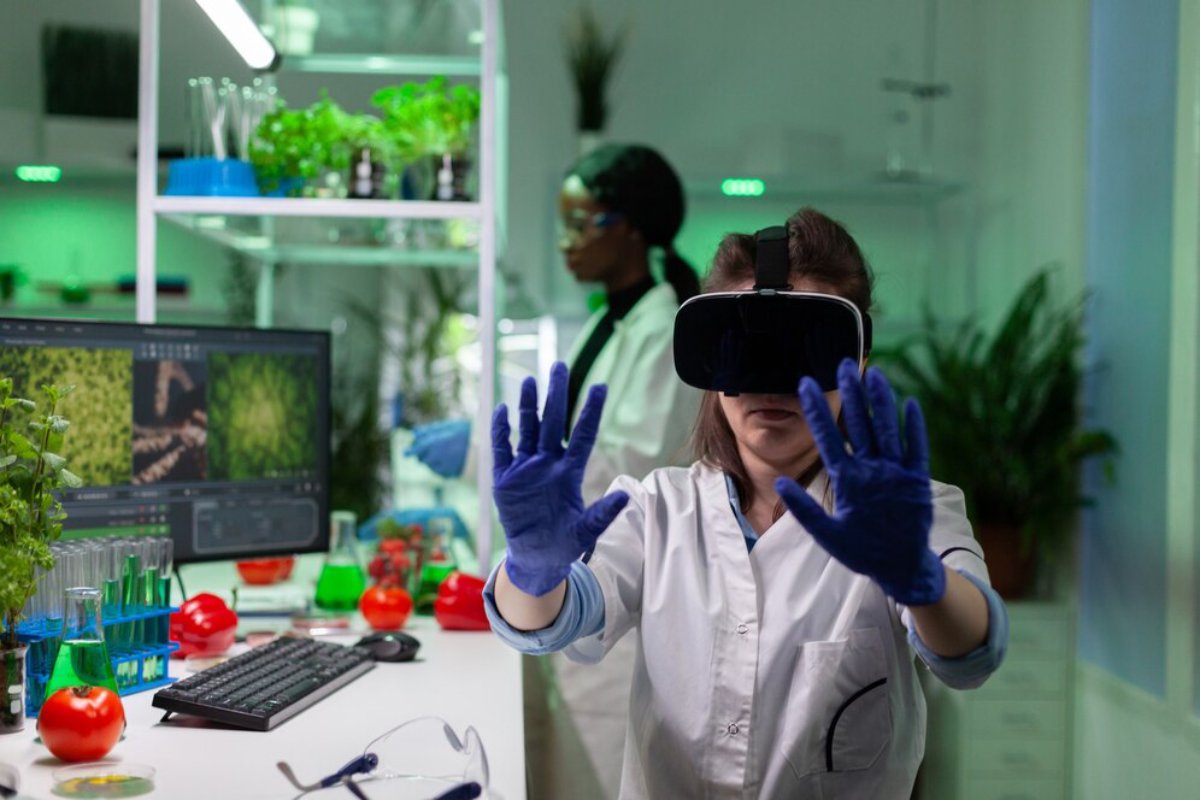
Virtual Labs in Education: Simulating Science Experiments with VR
Science has always been a subject best learned by doing. Many schools lack good labs, affordable materials, or safe spaces for hands-on experiments. Discover VR science labs—a game-changer in STEM education. They transform curiosity into exciting, hands-on exploration for students.
These digital labs mix virtual reality with interactive simulations. They make chemistry, biology, and physics concepts come alive. Virtual experiments for schools let students mix chemicals and dissect organisms safely. They provide engaging and repeatable alternatives to traditional lab work.
This article looks at how virtual labs are changing education. We’ll cover the benefits for both students and teachers. We’ll also show how immersive STEM learning enhances classrooms.
The Rise of VR in the Classroom
Virtual reality in education is growing quickly. It’s used in many subjects. For example, students can take virtual field trips in geography. They can also explore historical events in social studies. In STEM, however, the impact is particularly profound.
VR science labs allow students to:
- Explore molecules at the atomic level
- Conduct physics experiments in zero-gravity conditions
- Simulate chemical reactions in high-risk environments
- Interact with virtual specimens and ecosystems
These aren’t just animations. They are 3D experiences that react to what students do. This helps them engage deeply with complex scientific ideas.
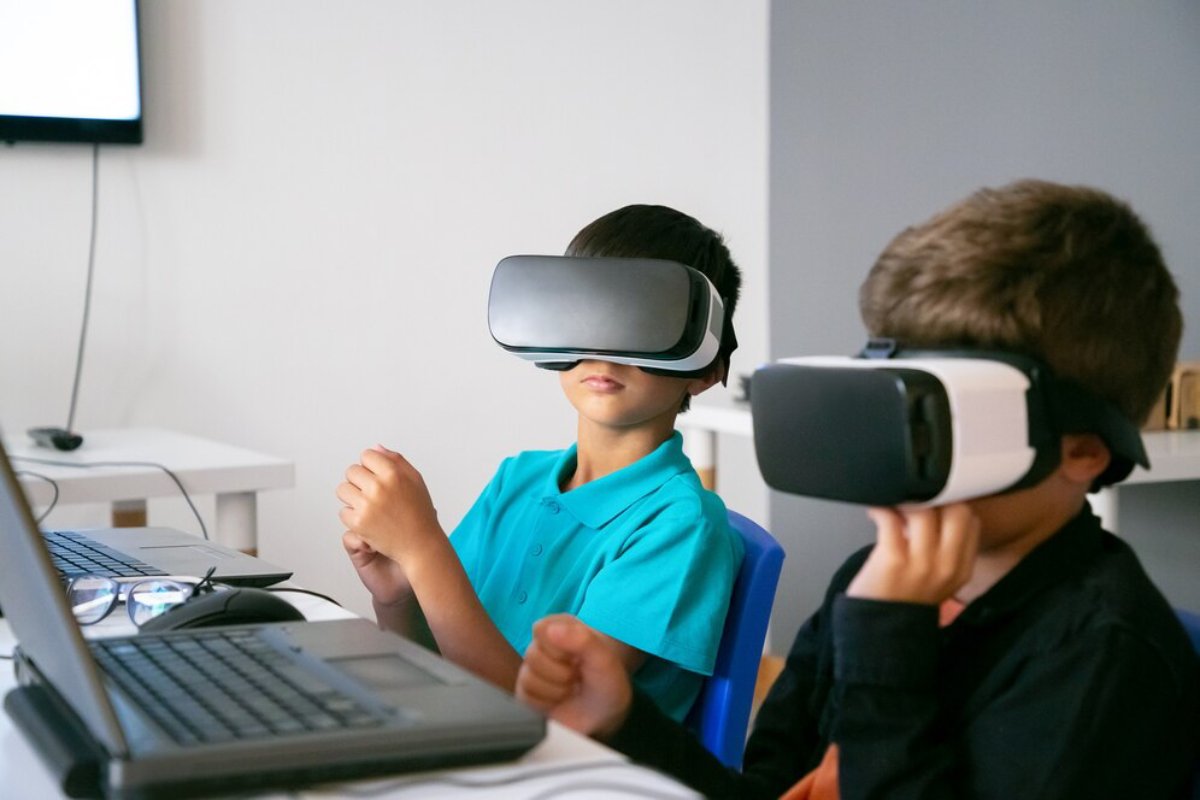
Why Virtual Experiments Matter
Traditional science labs are irreplaceable in many respects. But not every school has access to them, and not every student thrives in the same environment. Virtual experiments for schools fill important gaps. They provide flexible ways for students to engage.
Key Advantages:
- Accessibility: Brings lab experiences to underserved schools or remote learning environments
- Safety: Eliminates exposure to hazardous materials, cuts, burns, or chemical spills
- Scalability: No need for constant restocking of supplies or worry over broken equipment
- Cost-efficiency: Reduces expenses related to physical setups and one-time-use materials
- Repetition: Allows students to redo experiments until mastery without penalty
- Equity: Ensures every student has the same opportunity for interaction and discovery
Virtual labs are versatile assets in science education. They can supplement physical labs or replace them in low-resource settings.
Immersive STEM Learning: Beyond the Textbook
Its interactive design puts the ‘wow’ in immersive STEM learning. Unlike passive digital animations or video tutorials, students dive in headfirst. In a VR science lab, students can explore and experiment. They twist every variable until they discover something new. Here are some activities they might do:
- Adjust heat and pressure to observe changes in chemical states
- Dissect a virtual frog while learning organ systems in 3D
- Assemble circuits and see real-time responses
- Test Newton’s laws in virtual skate parks or planetary environments
- Zoom into cells or DNA strands for a close-up view of biological systems
The result? Knowledge is gained through experience, not memorisation.
Subjects and Concepts Best Suited to Virtual Labs
VR can help in many STEM fields, but some topics benefit the most from it.
Chemistry
- Atomic and molecular structure visualisations
- Safe experimentation with acids, bases, and explosives
- Reaction rate demonstrations and balancing equations
- Simulated titrations, distillations, and chromatography
Biology
- Dissection of organisms and study of anatomy
- Cell structure exploration
- Ecosystem and biodiversity simulations
- Genetics and DNA interaction models
Physics
- Kinetics, motion, and energy transfers
- Electromagnetism and circuit building
- Gravity and planetary physics
- Light, sound, and wave behaviour
Environmental Science
- Climate systems simulations
- Virtual ecosystems and sustainability experiments
- Pollution modelling and carbon cycle dynamics
These virtual tools help teachers guide students through complex scenarios. Some of these scenarios might be impossible or impractical in a regular lab.
Popular VR Science Lab Platforms
Several platforms are leading the charge in developing VR tools for science education. While offerings vary, many include curriculum-aligned content, classroom controls, and real-time feedback.
Labster
Offers fully immersive science lab simulations aligned with high school and college curricula. Topics range from cell biology to organic chemistry.
VictoryXR
Features virtual classrooms, science labs, and even AR models. Supports both K–12 and higher education settings.
Mel Science
Blends VR with physical kits for hybrid learning. It focuses on chemistry and physics concepts.
zSpace
Offers a mixed AR/VR setting with engaging science models and lessons for STEM subjects.
These platforms offer scalable, customisable solutions for various educational environments and teaching styles.
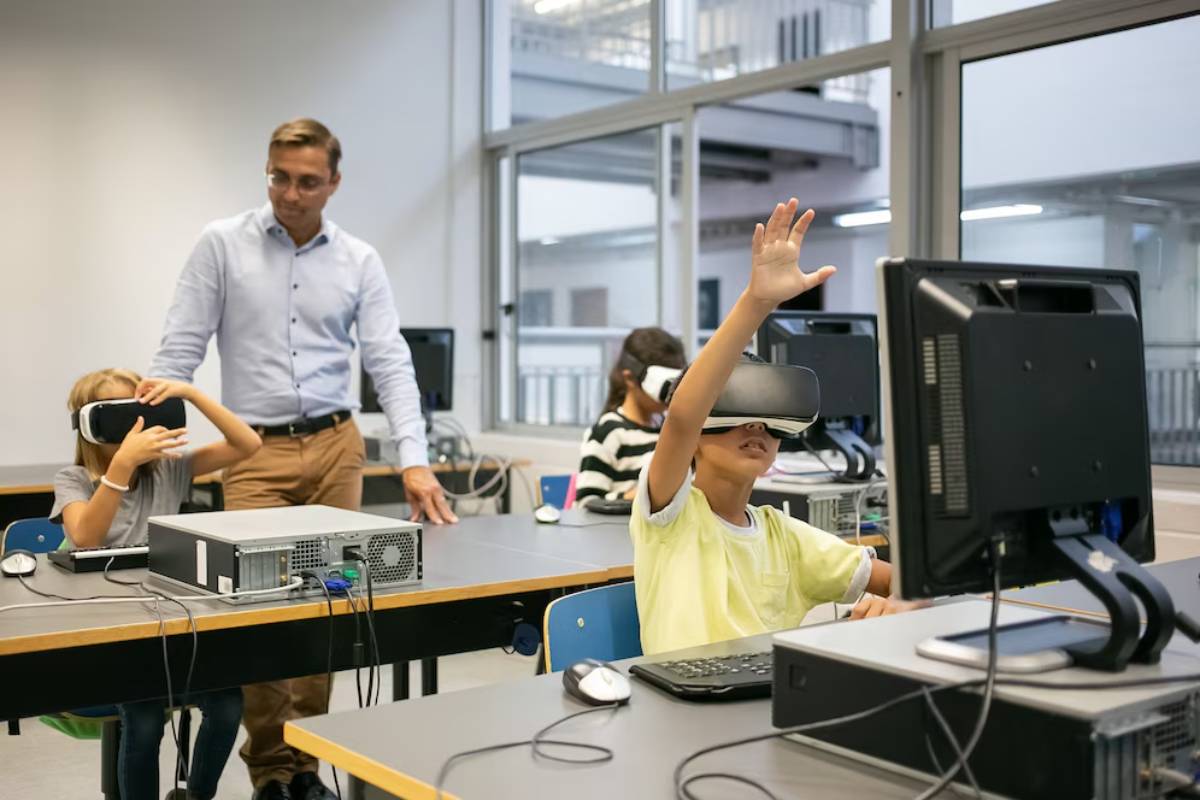
Supporting Teachers in the Transition
Using VR science labs in the classroom doesn’t replace teachers. Instead, it empowers them. Teachers play a crucial role in guiding exploration, framing discussion, and contextualising learning.
To support educators, many platforms offer:
- Professional development resources
- Curriculum-aligned lesson plans
- Assessment tools to measure progress
- Admin dashboards to track student engagement
- Classroom management tools for real-time instruction
Virtual labs are a strong ally, but they don’t replace teacher expertise.
Challenges and Considerations
Despite their promise, virtual labs come with practical considerations.
Technology Access
- Not all schools have VR headsets or high-performance devices
- Requires reliable Wi-Fi and compatible hardware
Student Comfort
- Some learners may experience motion sickness or fatigue in VR
- Younger students may need a gradual introduction to immersive environments
Curriculum Alignment
- VR labs must be mapped to local or national standards
- Not all experiments may be available or relevant to every curriculum
Equity of Experience
- Schools in underserved areas may still struggle with device access
- Funding and training support are key to closing the digital divide
Educators and administrators should consider these factors when choosing virtual lab solutions. Many believe the benefits far exceed the challenges.
The Future of Virtual Experiments for Schools
Virtual experiments for schools will soon be common. This change comes as hardware gets cheaper and educational platforms advance.
Emerging trends include:
- Haptic feedback to simulate touch and pressure during virtual experiments
- Voice AI integration for natural interaction and instruction
- Multi-user lab environments that support group collaboration in real-time
- Expanded language support to increase global accessibility
- Integration with learning management systems (LMS) for seamless grading and tracking
In the future, virtual labs might be as important to science education as textbooks used to be.
Final Thoughts: Bridging Curiosity and Capability
In every student lies a scientist. The right tools can awaken that curiosity and give it space to grow. Virtual Reality science labs lower barriers of cost, safety, and access. They offer experiences that are immersive, repeatable, and engaging.
Virtual experiments for schools let students experience science through fun and precision. They encourage students to study, question and even love science.
Immersive STEM learning can help future scientists learn and dream bigger. This approach supports our goal of building inclusive and tech-savvy classrooms.
